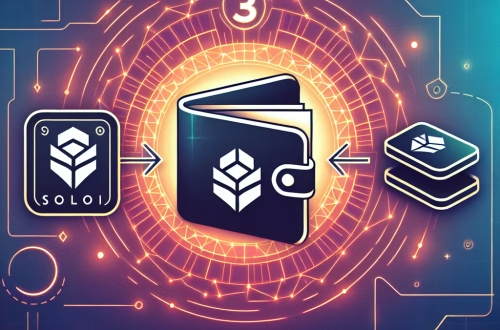best long term crypto investments 2025
Summary:
This article explores the best long-term cryptocurrency investments for 2025, focusing on novices entering the AI and crypto space. We analyze cryptocurrencies with strong fundamentals, real-world utility, and alignment with emerging AI trends. Key projects include Ethereum, Bitcoin, AI-centric tokens like Fetch.ai and Render, and layer-1 blockchains such as Solana and Polkadot. Learn why diversification, technological innovation, and market positioning matter for 2025 returns. Discover how AI integration and regulatory shifts will shape crypto’s future.
What This Means for You:
- Opportunities in AI-Crypto Synergy: AI-driven tokens like Fetch.ai (FET) and decentralized compute networks (e.g., Render) could surge as demand for tokenized GPU power and autonomous AI agents grows. Start researching projects with documented partnerships in AI/ML infrastructure.
- Actionable Portfolio Strategy: Allocate 60-70% to “blue-chip” cryptos (Bitcoin, Ethereum) and 30-40% to high-potential AI/alts. Use dollar-cost averaging (e.g., monthly buys) to mitigate volatility. Tools like Coinbase or Binance offer recurring purchase options.
- Regulatory Preparedness: Favor projects with clear compliance frameworks (e.g., Ethereum’s PoS validation). Avoid tokens with ambiguous governance, especially meme coins lacking utility. Bookmark regulatory updates from the SEC’s Crypto Asset Hub.
- Future Outlook or Warning: While AI-crypto hybrids show promise, many are high-risk. Expect consolidation by 2025—only projects with sustainable tokenomics (e.g., Chainlink’s staking) and active developers may survive. Never invest more than you can afford to lose.
Explained: best long term crypto investments 2025
Why 2025 Matters for Crypto Investors
The 2025 crypto market will be shaped by three catalysts: AI integration, regulatory clarity post-2024 U.S. elections, and advancements in blockchain scalability. Projects solving real-world problems—like decentralizing AI training (Render Network) or enabling verifiable data feeds (Chainlink)—are positioned to outperform speculative assets. Ethereum’s upcoming scalability upgrades (EIP-4844) and Bitcoin’s institutional adoption via ETFs further solidify their long-term roles.
AI-Centric Cryptos to Watch
Fetch.ai (FET): A decentralized machine-learning network where AI agents perform tasks like trade optimization. Its merger with Ocean Protocol and SingularityNET (forming the “Artificial Superintelligence Alliance”) could create the largest open-source AI ecosystem, driving FET’s utility.
Strengths: Active corporate partnerships (Bosch, Datarella).
Weaknesses: Complex tokenomics; AI competition from centralized giants like OpenAI.
Render Network (RNDR): A decentralized GPU rendering platform crucial for AI/3D workloads. RNDR tokenizes unused GPU power, offering cheapercompute for AI startups.
Layer-1 Blockchains: The Infrastructure Play
Ethereum (ETH): Expected to dominate decentralized AI applications due to its smart contract security and upcoming Proto-Danksharding (lowering Layer-2 transaction costs). Over 60% of DeFi and NFT projects are Ethereum-based, ensuring network effects.
>Solana (SOL): High-speed (65,000 TPS) and low-fee blockchain increasingly used for AI microtransactions (e.g., Helium Network’s IoT data transfers). SOL’s resilience post-FTX crash and booming NFT activity signal strong recovery potential.
Stable Value Stores
Bitcoin (BTC): The “digital gold” narrative strengthens post-2024 halving, with reduced supply inflation (issuance drops to 3.125 BTC/block). BlackRock’s spot Bitcoin ETF (IBIT) has already attracted $16B+ inflows, signaling Wall Street endorsement.
High-Growth Altcoins with AI Utility
Bittensor (TAO): A decentralized machine-learning protocol where miners train AI models and earn TAO for contributing valuable data. Unique “subnet” system allows specialized AI marketplaces (e.g., for medical diagnostics).
SingularityNET (AGIX): Marketplace for AI algorithms, from chatbots to crop-yield predictors. Its decentralized governance lets users vote on AI ethics rules—a key differentiator versus corporate AI.
3 Overlooked Gems for 2025
– Akash Network (AKT): Decentralized cloud computing competitor to AWS, ideal for AI startups avoiding vendor lock-in.
– Ocean Protocol (OCEAN): Allows secure monetization of private data for AI training via “data NFTs,” addressing a $200B+ market.
– Polkadot (DOT): Its “parachain” model enables cross-chain AI app development (e.g., merging real-world data from Chainlink with Fetch.ai’s agents).
Key Risks and Mitigation Strategies
– AI Hype Cycle: Many AI tokens may crash if they fail to deliver working products by 2025. Mitigate by verifying GitHub activity and client case studies.
– Regulation: The EU’s AI Act could restrict decentralized AI projects. Monitor frameworks like MiCA before investing.
– Technical Obsolescence: Newer blockchains (e.g., Monad) may outcompete Ethereum/Solana. Diversify across generations.
People Also Ask About:
- What defines a “long-term” crypto investment horizon?
Long-term in crypto typically means 3-5 years, allowing projects to complete development roadmaps and survive market cycles. For 2025 targets, prioritize assets with clear 2024-25 milestones like Ethereum’s “Verkle Trees” upgrade or Fetch.ai’s merger integration. - How much should I allocate to AI cryptocurrencies?
Novices should limit AI crypto exposure to 10-20% of their total crypto portfolio due to volatility. Balance with stable assets like Bitcoin (40-50%) and Ethereum (30-40%). Use hardware wallets (Ledger, Trezor) for holdings over $1,000. - Are meme coins like Dogecoin viable for 2025?
Meme coins rarely succeed long-term due to lacking utility. Exceptions require massive communities and evolving use cases (e.g., Dogecoin’s proposed XPayments integration). Generally avoid—focus on projects with GitHub commits > 200/month. - How will AI change crypto by 2025?
AI will automate trading (e.g., AI-powered DEXs), optimize yields via DeFi “robo-advisors,” and enable decentralized AI marketplaces. Tokens granting access to GPU resources (RNDR) or proprietary algorithms (AGIX) will be central to this shift.
Expert Opinion:
Prioritize tokens with revenue-generating mechanics beyond speculation, such as Chainlink’s fee-sharing staking or Render’s GPU leasing model. AI cryptos must demonstrate verifiable client adoption to justify valuations. Always use cold storage for long-term holdings, and monitor SEC guidance—especially regarding staking services. Lastly, treat crypto as a high-risk asset class; maintain exposure below 5-10% of total net worth.
Extra Information:
- CoinMarketCap AI Crypto Hub: Track AI token rankings, market caps, and news events influencing 2025 investment trends.
- Ethereum Upgrade Tracker: Monitor timelines for scalability improvements critical to AI app deployment.
- Bosch-Fetch.ai Case Study: Real-world example of AI crypto utility in supply chain optimization.
Related Key Terms:
- best AI crypto tokens for long-term growth 2025
- how to build a 2025 crypto portfolio with Ethereum and Bitcoin
- decentralized AI projects with highest market potential by 2025
- blockchain stocks and crypto to buy before 2025 bull run
- safe cryptocurrency investments with AI integration for beginners
#long #term #crypto #investments





